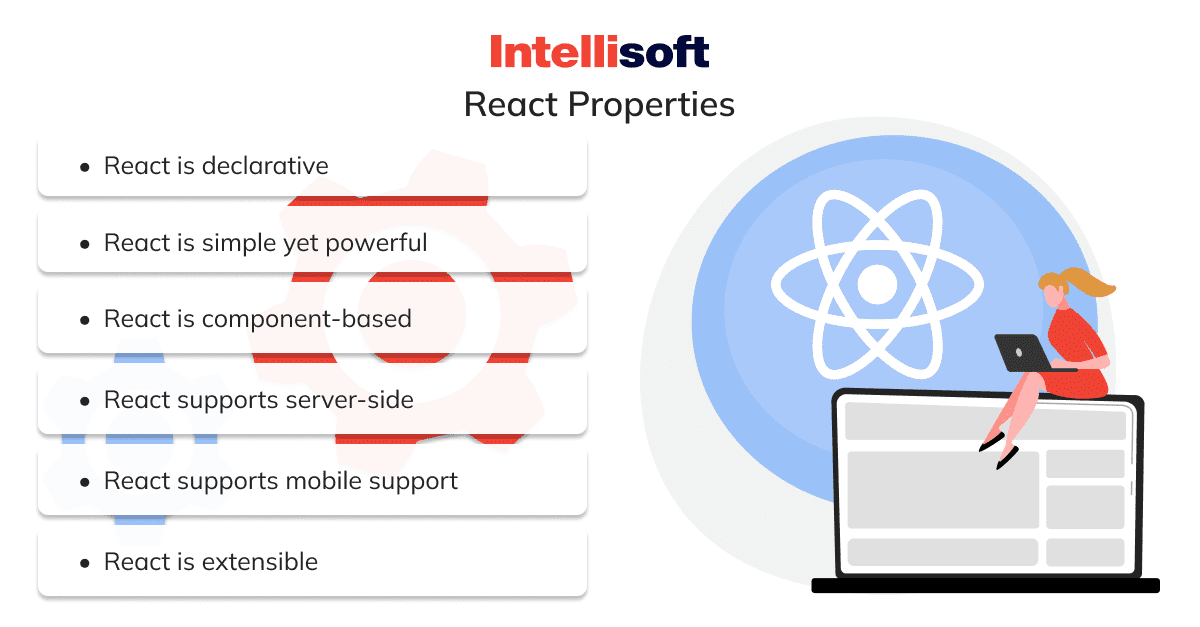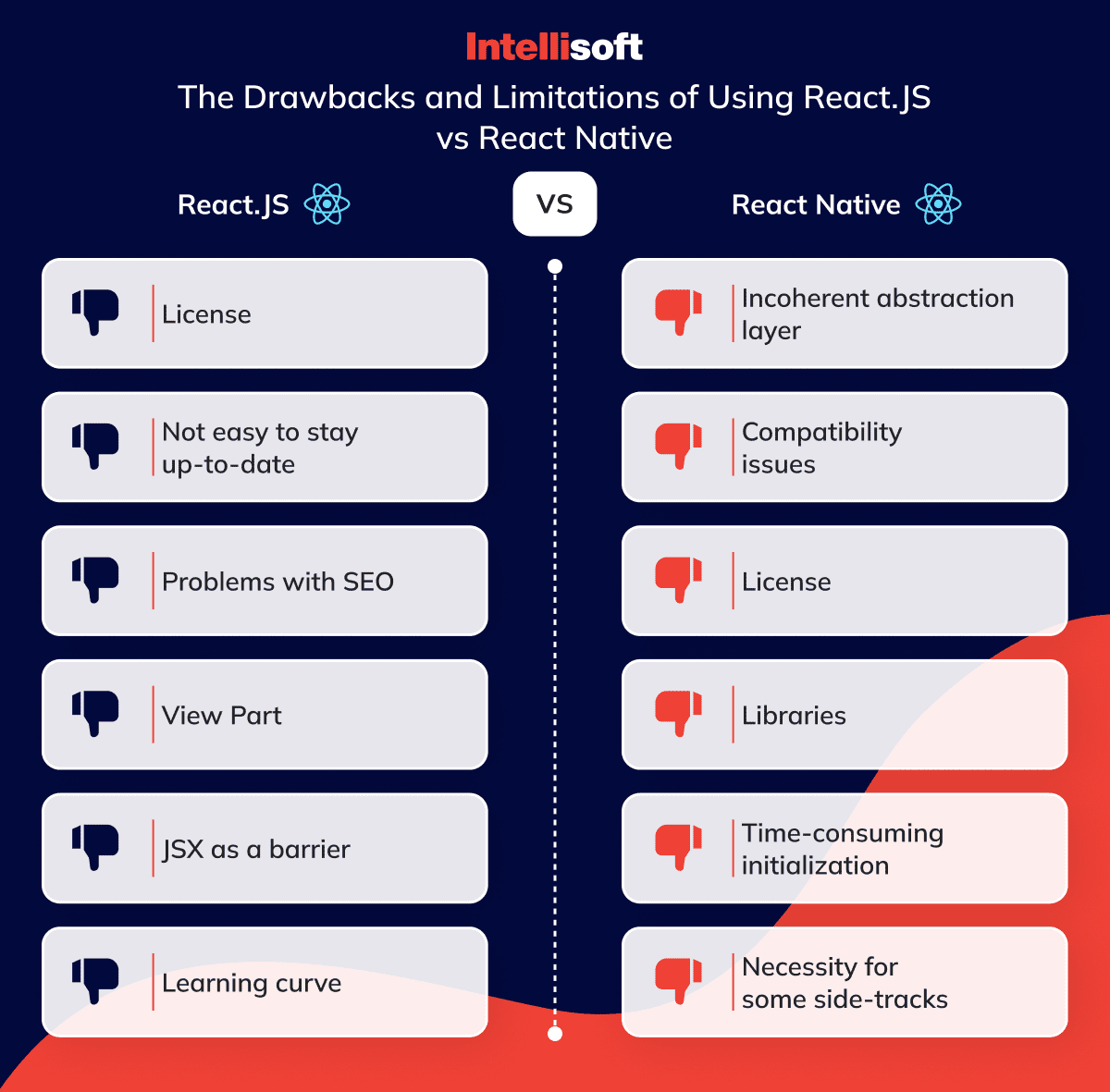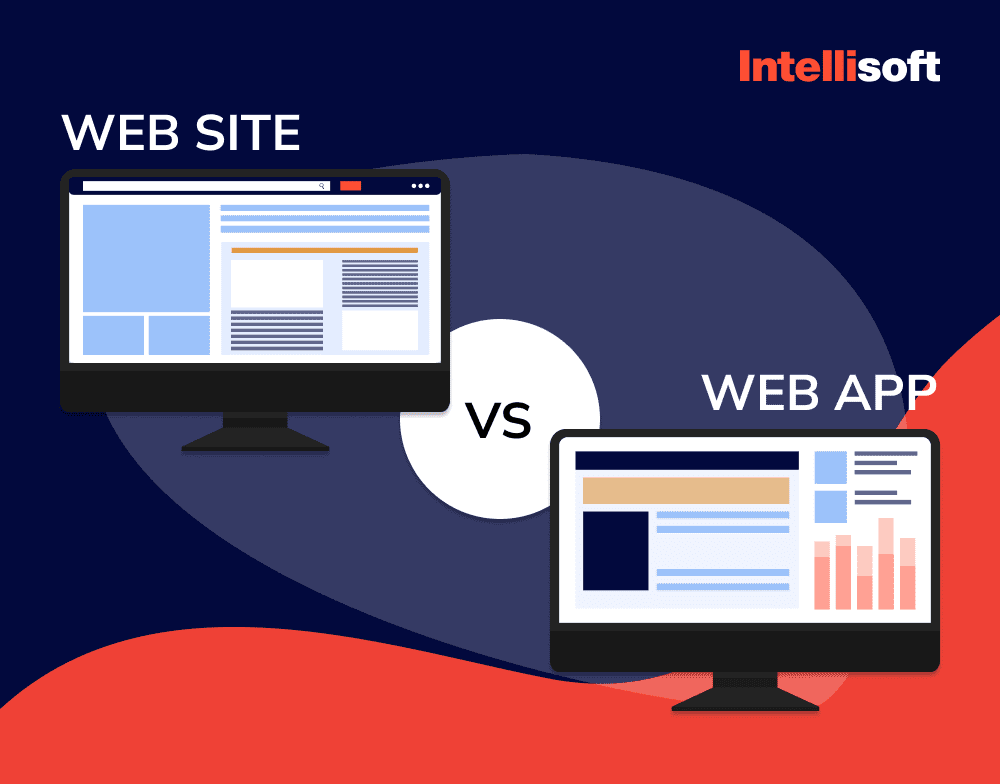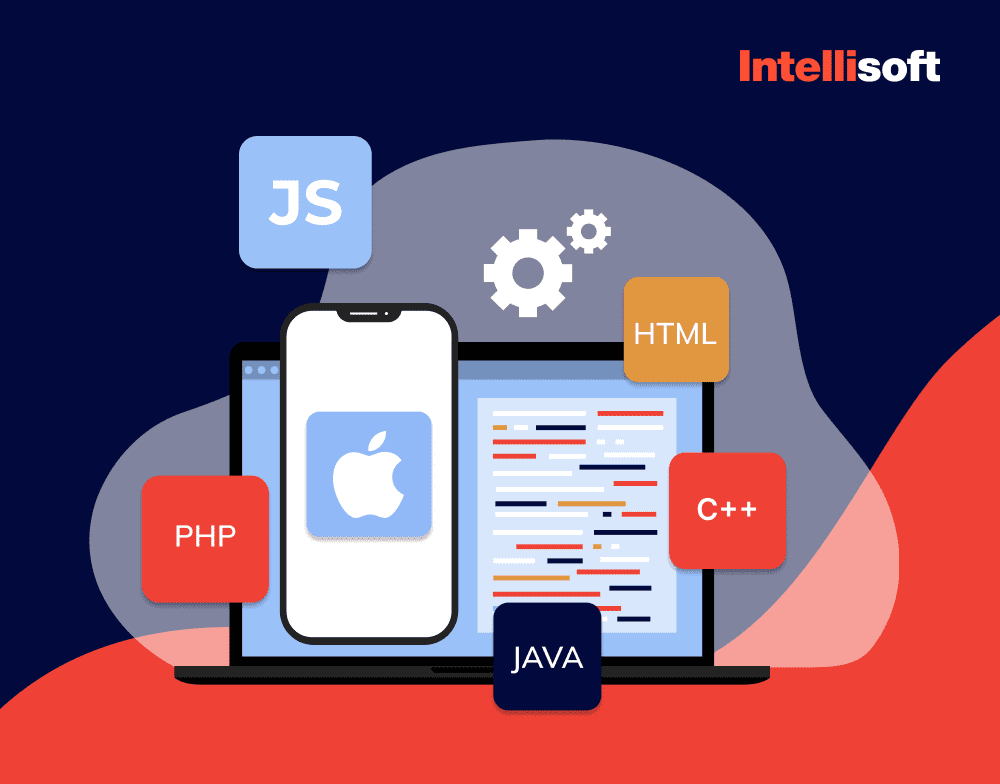It’s a common human experience—getting tangled up in a web of confusion due to the myriad of things in our lives, especially when those things share similar names (like React JS vs React Native).
Ever wondered about something new, like an app or a product? Chances are, you’ve Googled it. A simple search can reveal its functionalities, applications, and key features. But with tech terms, especially like front-end and back-end frameworks, it’s easy to get overwhelmed and return to Google for clarity.
Here’s the scoop: In the tech universe, there’s a particularly tricky pair of terms that often gets people mixed up—React Native vs React JS. To the uninitiated, and sometimes even to new developers, React Native might sound like just another version of React. But that assumption could lead you down the wrong path.
What’s the real story behind these terms, and why does this confusion keep popping up? That’s exactly what we’re here to explore in this article.
React and React Native are both giants in the app development world. Their names are deceptively similar, with just an extra word distinguishing them, making it easy to be misled at first glance. If you’ve ever found yourself puzzled about the differences between React vs React JS vs React Native, you’ve come to the right place to unravel this technological enigma.
In the world of web, knowledge reigns supreme. At IntelliSoft, our mastery stretches from crafting cutting-edge mobile apps to architecting robust cloud solutions, empowering businesses to widen their horizons and boost engagement. Dive in to discover how we can transform your digital landscape!
Table of Contents
Understanding the Basics: What is React.JS?
Let’s introduce our first contender, React.JS, or simply React, a sleek, innovative, and mighty tool in the realm of user interface (UI) development. Born from the intellectual cauldron of Facebook’s engineering team, React.JS is an open-source JavaScript library that sets the stage for creating dynamic, high-performance UIs with a distinctive edge.

React.JS isn’t just another pretty face in the crowd of JavaScript libraries. What makes it stand out is its exceptional capacity to facilitate the creation of intricate and interactive user interfaces in a smooth and effective way. React is now a community project maintained by Facebook and a merry band of dedicated individual developers and companies.
It’s similar to having a well-stocked toolbox when you’re starting a substantial home renovation project. React.JS ensures you have the right tools at hand, and you’re not left floundering in the middle of the development process, wishing you had a better way to manage the construction of your user interfaces.
How Does React.JS Work?
We’ll have to dig a bit deeper and unravel the inner workings of React.JS. It’s all fine and dandy to know that React.JS can help you build a robust UI, but how does it accomplish this feat? What’s the trick? The answer lies in its ingenious method.
React.JS achieves this through its innovative use of a Virtual Document Object Model (DOM), an abstract form of the actual DOM. If you consider the DOM as a tree structure where each branch and leaf represents a part of the web page, the Virtual DOM is like its doppelgänger. Every time you make changes, React.JS modifies the Virtual DOM first. React.JS identifies which aspects of the real DOM need to change based on those modifications, then updates those specific sections without having to redraw the entire page.
The introduction of React results in vastly improved performance and a seamless user experience because only the altered parts of the real DOM get updated. React changes the way you build user interfaces, making your applications fast, efficient, and as modern as a hoverboard in a 19th-century town and opening the door for dynamic, high-performance web development capabilities.
Getting to Know React Native
From the family tree of React, a new sapling has emerged that focuses not on the browser, but the mobile platform – meet React Native. It is a framework for developing mobile applications that can be rendered natively on both iOS and Android platforms. And the best part? It uses JavaScript and React, offering the comfort of a well-known language and the power of a beloved library.
React Native takes the essence of React JS, inheriting its fundamentals, but is exclusively tailored for mobile platforms. They are like two siblings who share the same parents (JavaScript and React) but chose different career paths—one went into web development (React.JS), and the other is focusing on mobile application development (React Native).

React Native enables development teams to create mobile apps of exceptional quality that can rival those developed with Objective-C, Java, or Swift. It seeks to provide the speed, look, and functionality of a native mobile application while utilizing the efficiency and simplicity of React JavaScrip library.
How Does React Native Operate?
How does React Native accomplish this delicate balance between authenticity (native apps) and efficiency (React)? It achieves it by leveraging the same design philosophy as React.JS and, just like its older sibling, creating a rich, mobile UI from declarative components.
Here’s where React Native takes a bit of a detour from React.JS. Instead of using HTML to render the app, React Native employs native components. The result is a genuine mobile UI and not just a “web app” or “HTML5 app” masquerading in mobile clothing. This is like ordering a handmade, wood-fired pizza instead of settling for a frozen supermarket version. They may both be called ‘pizza,’ but the taste, texture, and overall experience are worlds apart.
React Native takes your JavaScript codebase, interprets it, and converts it into real, native application code. It’s like having a skilled translator who can seamlessly convert your ideas into another language (in this case, native mobile code).
Through this approach, React Native manages to retain the advantages of React.JS (like the use of a virtual DOM and the ability to utilize reusable, stateful components) and combines them with the raw performance, look, and feel of native mobile applications. The outcome is a framework that allows you to build robust, high-performing mobile apps using a single, versatile language: JavaScript.
In short, React Native offers the best of both worlds. It bridges the gap between native development and JavaScript’s agility, serving as a powerful tool in the developer’s arsenal. So whether you’re an iOS devotee, an Android aficionado, or a developer tasked with creating apps for both, React Native has you covered. It’s this versatility that makes React Native a strong contender in the ongoing ‘React JS vs. Native’ debate and a worthy consideration for your next mobile application project.
Related readings:
- Flutter vs. React Native: Which to Choose for Cross-Platform Development?
- How to Make a Cross-Platform App That Thrives: A Step-by-Step Guide
- Angular vs React: Which Would Be a Better Solution
- 15 Popular Sites Built With React JS
- Web Development vs Mobile Development: What to Choose?
Drawing the Battle Lines: Native React vs React JS
As we explore the React Native vs React JS difference, we’ll see the two frameworks reveal their true strengths and show why they’re loved by developers globally. Like two skilled fencers, each with their unique set of maneuvers and tactics, they hold their ground on the stage of web and mobile application development.

Performance Comparison
On the performance front, both frameworks boast impressive stats. React.JS, the savvy elder sibling, is renowned for its prowess in rendering complex, high-load web applications with smooth efficiency. This framework takes large, intricate web apps and makes them feel as light and easy to navigate as a single-page brochure site. React accomplishes this feat using a virtual DOM to limit real-time updates, making web applications faster and more efficient.
Enter React Native, the younger yet ambitious sibling. It aims to bring the efficiency of React.JS to the mobile world, and it does a pretty admirable job. While it’s slightly slower than native iOS or Android development (think of it as a sports car that’s just a second slower on the racetrack), the gap is closing rapidly. React Native uses native components to render the UI, enabling it to leverage the device’s capabilities better and maintain excellent performance levels, even for more complex applications.
Use Case Scenarios
When it comes to the ideal use case scenarios, our two contenders reveal their favorite battlefields. React.JS, with its proficiency in building dynamic and SEO-friendly web applications, finds its stronghold in the web application domain. Whether you’re developing a social media platform, a complex e-commerce site, or an enterprise-level web application, React.JS serves up the perfect recipe for success.
On the other side, React Native brandishes its weapon of choice—the ability to build cross-platform mobile applications. React Native is a dream come true for businesses that want to conquer both the iOS and Android landscapes but don’t want to maintain two separate codebases.
For a web developer transitioning to mobile app development, the environment of React Native feels surprisingly familiar. The transition becomes less daunting, and developers can build high-quality mobile apps without needing to learn a new, complex programming language. React Native, therefore, eases the learning curve and speeds up the development process.
Development Environment
Let’s see what our contenders bring to the table in terms of the development environment. React JS keeps things simple and fuss-free. To embark on your journey with React.JS, all you need are two basic tools: a text editor and a web browser. Like setting off on a road trip – as long as you have your trusty car and a roadmap, you’re good to go. Developers can choose from a variety of build tools and libraries according to their preferences, ensuring flexibility and efficiency in their development process.
React Native, on the other hand, asks for a bit more luggage for the trip. It requires additional setup for mobile app development, including Xcode for iOS development and Android Studio for Android development. While the setup can seem daunting at first, the extensive documentation and supportive community make the process more manageable.
User Interface Components
Components are the elements, the building blocks of user interfaces, and both React JS vs Native embrace this concept. With these powerful frameworks, developers can create intuitive and engaging interfaces that users will love. But much like two sculptors working in different mediums—one clay, the other marble—their implementations differ. React.JS uses HTML and JSX (JavaScript XML) to create components for the web.
React Native, in contrast, goes the native route. It uses native UI components for mobile platforms, ensuring that React Native apps have a truly native look and feel. Therefore, this framework provides apps that feel right at home on their respective platforms.
Community and Support
No framework operates in isolation, and the strength of its community and support system plays a pivotal role in its success. Both React Native and React JS are fortunate in this respect—they have large, active communities and robust support from Facebook.
React.JS, being the elder in the family, has a slightly larger community due to its earlier release. A town that’s been around for longer is naturally more populated and has more infrastructure. This mature community translates into a wider range of third-party libraries and resources for developers to tap into.
React Native, while younger, has been making waves and growing its community rapidly. Its vibrant, ever-growing ecosystem is reminiscent of a bustling, up-and-coming city. While it might not have the same level of third-party libraries as React.JS, the gap is narrowing, and the future of React Native looks bright and promising.
So, whether you’re stepping into the web or the mobile world, you won’t be walking alone. Both React JS vs React Native ensures you’ll be joining a lively, welcoming community that’s eager to collaborate and grow together.
When to Choose React.JS?
Imagine you’re constructing a grand castle, but instead of bricks and mortar, you have codes and components at your disposal. You’d surely want to choose the most fitting materials for your architectural masterpiece. In the world of web development, when it comes to building dynamic and responsive web applications, React.JS often becomes the choice material.
React.JS is like versatile clay that’s ideal for molding complex shapes, perfect for the digital landscape where adaptability is key. Here’s why and when you’d want to choose React.JS for your development endeavors:
Dynamic and Responsive Web Applications
React.JS is designed to bring websites to life. If you need your web application to not just exist but to perform, adapt, and engage, React.JS is your go-to tool. React JS’s virtual DOM ensures that only the changed parts of the real DOM are updated. This makes applications fast and efficient.
Adaptability to Various Screen Sizes and Devices
The modern digital era is filled with diverse devices where flexibility is key. Your web application should be a chameleon, gracefully adapting to diverse screen sizes and devices without breaking a sweat. React.JS enables your web interfaces to adapt seamlessly to different screen resolutions, ensuring that the user experience is flawless, regardless of the device used, be it a desktop, tablet, or smartphone.
Complex UIs and Single-Page Applications (SPAs)
Some web applications demand intricate designs and rich functionalities. React.JS shines in this domain, enabling the creation of complex UIs that feel fluid and natural. Its component-based architecture allows you to break down complex UIs into manageable building blocks, making development a breeze. For Single-Page Applications (SPAs), where the whole story unfolds on one endless canvas, React.JS acts like an artistic director, orchestrating every scene and transition with finesse.
React JS, with its flexibility, efficiency, and adaptability, fits into the world of web development like a key into a lock. Whether it’s a simple blog or a complex e-commerce platform, if it’s on the web and needs to engage and adapt, React.JS could very well be your answer. Like choosing the right paint for a masterpiece, knowing when to choose React.JS can turn your project into a work of art that resonates with users across the digital landscape.
When to Choose React Native?
In the intricate world of development, choosing the appropriate tool for the task can often be the deciding factor between triumph and tribulation. React Native is one of those potent tools crafted specifically for mobile application development. So, when does it become the right choice for your project? Let’s explore:
Building Mobile Apps for Android and iOS Platforms
React Native’s primary goal is clear and focused. If you are venturing into the world of mobile application development targeting both iOS and Android platforms, React Native is a compelling option. It’s like a versatile multi-tool tailored to handle the specific needs of mobile environments.
Saving Development Time and Costs
One of the most prominent features of React Native is its ability to use a single codebase for both iOS and Android platforms. This is not merely a convenience but a significant advantage, especially in terms of time and cost. Instead of creating separate codebases for each platform, developers can write once and run everywhere, leading to a more streamlined development process.
Ideal for Startups and Businesses Needing Quick Deployment
Speed and agility are often critical for startups and businesses that need to deliver a cross-platform mobile app to market quickly. React Native shines here, providing a framework that facilitates rapid development without sacrificing quality. Its ability to render a truly native look and feel ensures that users receive an authentic mobile experience.
Flexible and Scalable
React Native is not a one-trick pony confined to small projects. It offers the flexibility and scalability needed to handle complex applications. From social media apps to e-commerce platforms, React Native has proven its mettle across various domains.
React Native is not just a handy option but often the optimal choice when the path leads toward mobile application development. If the goal is to develop a cross-platform mobile application for both iOS and Android, if time and cost are of the essence, and if you want a framework that offers a blend of efficiency, flexibility, and performance, React Native is a choice that stands tall and strong. Whether for a budding startup or an established business looking to expand its mobile presence, React Native offers a route filled with potential and promise.
React JS vs React Native: Pros and Cons
In the world of web and mobile application development, React vs React Native vs React JS command respect for their respective domains. But, like all technology, they have their distinct strengths and weaknesses. Let’s dig deeper into the advantages and disadvantages of these two popular frameworks to provide a comprehensive perspective.
React.JS Pros
Excellent Performance for Web Applications
React.JS is renowned for its impressive performance when dealing with complex web applications. The optimized algorithms and robust structure enable smooth handling of high-load situations.
Rich Ecosystem and Active Community Support
With a wide array of tools, libraries, and community contributions, React.JS offers a rich ecosystem that facilitates diverse development needs. The active community is always there to lend a helping hand.
Virtual DOM for Efficient UI Updates
One of the defining features of React.JS is its use of a virtual DOM, allowing for efficient and intelligent updates to the user interface. This leads to a faster and more responsive user experience.
Reusable Components for Rapid Development
React.JS’s component-based architecture enables developers to reuse code across different parts of the application. This not only saves time but also maintains consistency throughout the app.
React.JS Cons
Need for Additional Setup for Server-side Rendering
To achieve server-side rendering with React.JS, additional configuration, and tools are required. This can add complexity and slow down the initial development phase.
Steeper Learning Curve for Beginners
While immensely powerful, React.JS might pose challenges for beginners. The learning period can be extended, especially if one is new to the concepts it employs.
Limited Native Capabilities Compared to React Native
React.JS is primarily focused on web development, and hence its native capabilities are limited compared to React Native. For mobile-specific features, React Native is generally the more appropriate choice. This is one of the most significant React JS and React Native differences.
React Native Pros
Cross-platform Development with a Single Codebase
React Native allows for the creation of mobile apps for both Android and iOS using a single codebase. This unified approach saves both time and resources.
Native App Performance and User Experience
Unlike hybrid solutions, React Native renders using native components, resulting in a truly native look and feel. This ensures an optimal user experience that aligns with platform-specific expectations.
Access to Device Features through Native Modules
React Native offers access to native device features such as the camera, accelerometer, and GPS. This integration with native modules extends the application’s capabilities beyond what’s possible with simple web technologies.
Hot Reload for Faster Development Iteration
The hot reload feature in React Native enables developers to see changes immediately without rebuilding the entire app. It’s a time-saver and a productivity booster.
React Native Cons
Larger App Size Compared to Fully Native Apps
React Native applications tend to have a larger size compared to apps built using native development methods. This might lead to longer download times and higher storage requirements.
Dependency on Native Modules for Certain Functionalities
While powerful, React Native still relies on native modules for specific functionalities. This can sometimes complicate development, particularly when specialized native knowledge is required.
Less Mature Ecosystem Compared to React.JS
Although rapidly growing, the React Native ecosystem is relatively younger and less mature compared to React JS. This might translate to fewer third-party tools and libraries, potentially limiting some options.

Both React Native vs React JS are robust frameworks with distinct advantages and challenges. React.JS shines in web development with its high performance and reusable components, while React Native is a go-to for cross-platform mobile applications with native performance. Assessing the pros and cons of each method aids in pinpointing the ideal tool for your specific project. The choice, as they say, is in the details, and when armed with this information, it would be easier for you to make the right decision.
Not a Fan of React? Best ReactJS Alternatives
While React (both React JS vs React Native) has certainly earned its place in the developer’s toolkit, it’s not the only game in town. Maybe you’re looking for something different, or perhaps you’re curious to explore React alternatives that might better suit your project’s unique needs. Either way, the web development world is rich with options. Here are some of the top alternatives to React that you might consider for your next project.
Vue.JS
Vue.JS is like the Swiss Army knife of the JavaScript frameworks, balancing simplicity and power. It offers an incrementally adoptable ecosystem that scales between a library and a full-featured framework.
Flexibility and Ease of Integration
Vue.JS is known for its flexibility, allowing developers to integrate it into projects gradually. It’s a gentle introduction for those new to frontend frameworks.
Component-Based Architecture
Like React, Vue.JS uses a component-based architecture, enabling reusable code and a well-structured application.
Performance
Vue.JS is optimized for performance and can handle complex applications smoothly.
Active Community Support
With an engaged community and rich ecosystem, finding help, plugins, or extensions is rarely a challenge.
Angular
Angular, the brainchild of Google, is a powerful platform for building web applications. It’s like the orchestrated symphony of web development, combining various elements into a cohesive whole.
Declarative Templates
Angular uses HTML as the template language and extends HTML’s syntax, allowing for a clear and concise way to describe the application’s components.
Dependency Injection
This unique feature helps in writing modular and maintainable code by managing the dependencies between different parts of the application.
End-to-End Tooling
Angular offers a full suite of tools for the entire development lifecycle, from initiation to deployment.
Integrated Best Practices
With built-in practices for performance, accessibility, and security, Angular ensures that you’re always on the right path.
Ember.JS
Ember.JS is like the master planner of JavaScript frameworks. It provides a robust and structured environment that shines in creating complex and modern web applications.
Convention over Configuration
Ember.JS favors convention, offering sensible defaults that streamline the development process. It’s like having a wise guide always nudging you in the right direction.
Built-in Tools
With tools such as Ember CLI, Liquid Fire, and Ember Data, the development process becomes smoother and more enjoyable.
Structured Approach
Ember.JS emphasizes a structured and organized approach to development. It might take a bit to learn, but once you do, it promotes efficiency and maintainability.
Community and Ecosystem
An engaged Ember community and extensive ecosystem provide support, plugins, and various extensions.
Choosing a framework or library for your future project is often a crucial decision that can shape the development process and the final product. While React has its strengths, the alternatives like Vue.JS, Angular, and Ember.JS offer distinct approaches and benefits that might align more closely with your project’s specific requirements.
Vue.JS is for those who seek flexibility, ease of learning, and an incrementally adaptable approach. Angular appeals to those who want an all-in-one solution backed by Google, with comprehensive tooling and integrated best practices. Ember.JS is the go-to choice for projects needing a structured, conventional approach with powerful built-in tools.
The choice must always depend on the project’s needs, the team’s expertise, and the long-term vision for the application. Sometimes, stepping off the beaten path can lead to exciting discoveries!
Looking Beyond React: React Native Alternatives
The world of mobile app development is filled with opportunities and challenges, and choosing the right technology can be like navigating a maze. While React Native has become a popular choice for cross-platform development, it’s not the only option on the table. Depending on your project’s requirements, goals, and team expertise, other alternatives may provide the perfect fit. Here’s a closer look at some of the best alternatives to React Native that challenge React Native’s dominance.
Flutter
Flutter, a React Native alternative, the dazzling brainchild of Google, enables the creation of beautiful, natively compiled applications for mobile, web, and even desktop from a single codebase.
Single Codebase
Write once and run everywhere. Flutter’s single codebase approach simplifies the development process across different platforms.
Hot Reload
This fantastic feature allows developers to see changes in real-time without restarting the app. It’s like having a “preview” button for your code!
Rich Set of Widgets
Flutter offers a comprehensive library of pre-designed widgets, allowing for customized and attractive UIs.
Performance
By compiling native code, Flutter offers performance that’s often comparable to fully native apps.
Ionic
Ionic, a React Native alternative, can serve as a bridge between the web and mobile worlds, using familiar web technologies like HTML, CSS, and JavaScript to create cross-platform mobile applications.
Web Technologies
If your team consists of web developers itching to dip their toes into mobile, Ionic, React Native expo alternative, might be the perfect stepping stone. It allows you to use existing web skills and knowledge.
Wide Range of Plugins
Ionic provides access to a plethora of plugins and extensions, enhancing functionality and integrating with native device features.
Performance
While not as fast as native apps, Ionic offers respectable performance for most standard applications.
Community and Support
With a vibrant community and substantial documentation, getting help or finding resources is rarely a struggle.
Xamarin
Xamarin, React Native flatlist alternative, the brainwave of Microsoft, provides access to the treasure trove of the company’s tech stack for mobile development. It allows you to build Android, iOS, and Windows apps using .NET and C#.
.NET and C#
If your team is already immersed in Microsoft’s ecosystem, Xamarin can feel like coming home. You can leverage existing skills and codebase.
Native Performance
Xamarin compiles to native code, ensuring a high-performance app that feels right at home on each platform.
Shared Code
Share up to 90% of the code across different platforms, significantly reducing development time and effort.
Visual Studio Integration
Xamarin integrates seamlessly with Visual Studio, providing a rich development environment with powerful tools.
The road to choosing the right mobile development framework is filled with twists, turns, and compelling alternatives. It’s essential to weigh the strengths and weaknesses of each option against your project’s specific needs and your team’s expertise.
Flutter stands out if you desire a single codebase for multiple platforms, with native performance and a touch of Google’s innovation. Ionic might be your choice if you have a web development background and want to venture into mobile without leaving behind familiar technologies. Xamarin could be the perfect fit if your team is steeped in Microsoft’s ecosystem and wants to leverage those skills in the mobile space.
Remember, the right choice isn’t about following the crowd but aligning the technology with your unique goals and constraints. The alternatives to React Native offer diverse approaches, catering to different project needs, and exploring them can lead to a solution that perfectly resonates with your development journey. Sometimes, looking beyond the familiar horizon opens up landscapes filled with untapped potential!
Decision Time: How to Choose the Right Framework for Your Project
Choosing the right framework is a pivotal decision in the app development process. The right choice will make your development smoother, while the wrong one can result in bumps and detours. Picking an alternative comes down to your project’s needs, budget, the team’s skill set, and the specific requirements of your app. It’s not just a matter of comparing features, but also matching the framework’s strengths and weaknesses with your unique project landscape.

Evaluate the Learning Curve
Like learning a new language or picking up a musical instrument, diving into a new development framework comes with its learning curve.
Familiarity
Are you or your team already acquainted with the framework? If yes, this can significantly accelerate development.
Complexity
Some frameworks have steeper learning curves than others. Assess if the time needed to climb that curve aligns with your project’s timeline.
Resources
Look at available documentation, community support, and educational materials. A well-supported framework can ease the learning process.
Project Complexity
The specific needs and complexity of your project will be crucial factors in choosing the framework that fits best.
React.JS
If you’re building complex and interactive web applications that need to adapt to various screen sizes and user interactions, React.JS might be your go-to tool.
React Native
On the other hand, if cross-platform mobile app development is your arena, especially for both iOS and Android platforms, React Native could be the better choice.
Budget
Money talks, and when it comes to development, it’s often a decisive factor.
React.JS
Generally, React.JS development might be more budget-friendly since it focuses on web development, which may require fewer specialized skills or tools.
React Native
While cost-efficient regarding cross-platform development, React Native might require additional resources if you need specialized native features or support for multiple platforms. Balancing these needs against your budget can guide your decision.
Timeline
Time waits for no one, and in the fast-paced world of app development, timelines are critical.
React Native
By using a single codebase for both iOS and Android platforms, React Native can shave precious weeks or even months off your development time.
React.JS
Development in React.JS might need extra effort and time for server-side rendering and dealing with web-specific intricacies, depending on your project’s requirements.
Choosing between React.JS, React Native, or another alternative isn’t a one-size-fits-all decision. It’s a delicate balance that requires careful consideration of factors such as learning curves, project complexity, budget, and timelines. The framework should be a tool that complements your project’s nature, not a constraint that confines your creativity and efficiency.
Consider laying down your requirements, your team’s expertise, and your budget constraints in clear terms, and then match these with the strengths and weaknesses of each framework. Engage in open dialogues with your development team, conduct research, and even seek external opinions if needed. In the end, the right choice will resonate with your project’s essence, making the development process not just a task but a seamlessly orchestrated symphony.
Conclusion
By now, you might have a pretty good grasp of the dynamic duo: React Native vs JS.
Though they cater to different end-product platforms, they share a common software development philosophy. Mastering one of these frameworks makes it significantly easier to understand the other. However, when diving into React Native, a solid foundation in React is crucial due to its limited support for more native applications.
Are you considering developing a web or mobile application? You might think about hiring expert developers in React vs React Native vs React JS. They can bring substantial long-term benefits to your project. But here’s the kicker: if you’re already proficient in JavaScript, picking up React will be a breeze.
Ready to take the plunge? Skilled developers at Intellisoft stand ready to exceed your expectations. Why wait? Contact us today and watch your project take flight!










